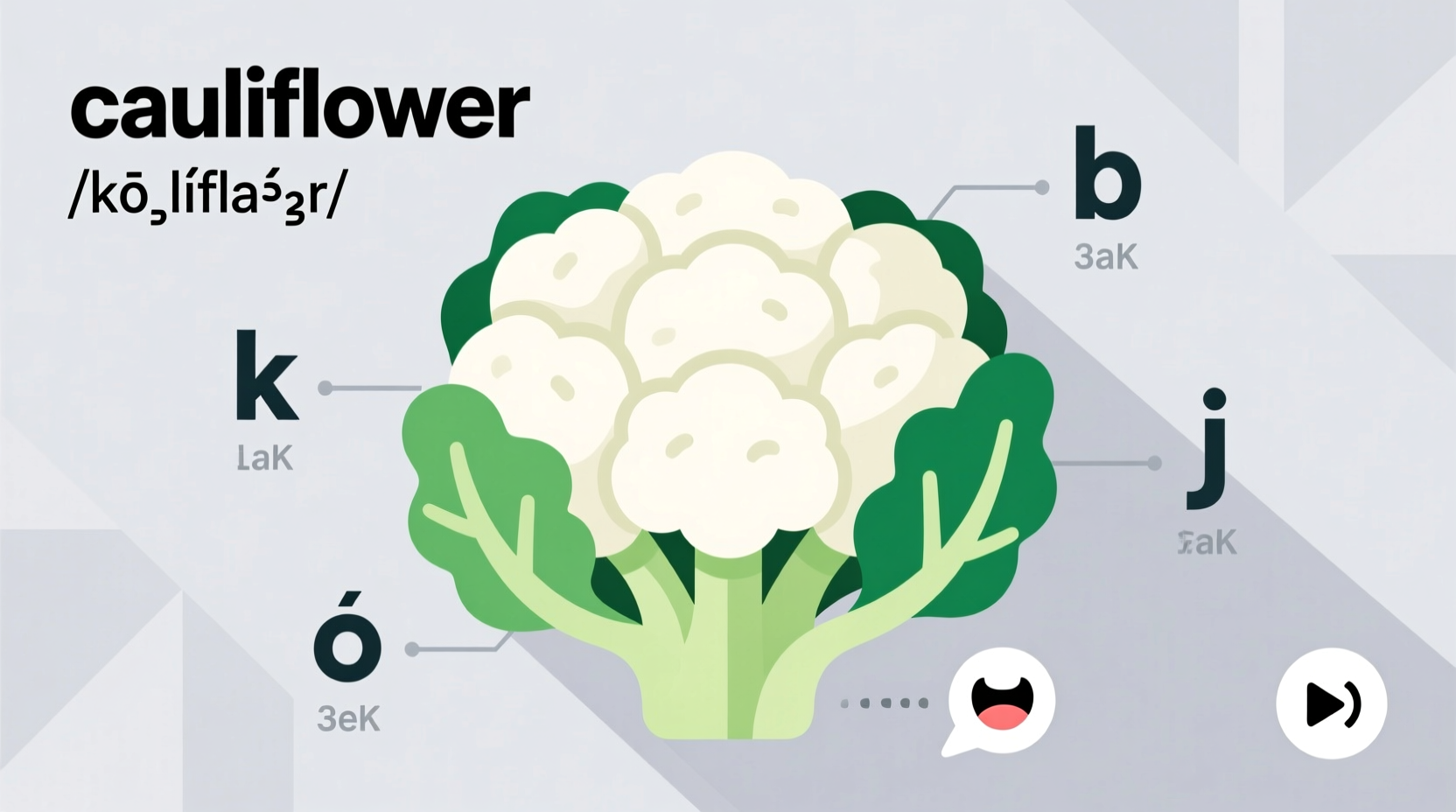Ever found yourself hesitating before ordering cauliflower steak at a restaurant or discussing this cruciferous vegetable at a dinner party? You're not alone. This seemingly simple word trips up even native English speakers, with Merriam-Webster reporting it as one of the most frequently mispronounced food words. Let's break it down so you can speak with confidence.
Hear It First: The Immediate Solution
Before diving into technical details, here's what you need to say right now:
- American English: KAWL-ih-FLOW-er (rhymes with "scallion flower")
- British English: KOL-ih-FLOW-er (rhymes with "Paul's flower")
Notice the subtle but important differences: Americans tend to pronounce the first syllable with a broader "aw" sound like in "call," while Brits use a shorter "o" sound like in "collar." Both versions clearly separate the "ih" in the middle and emphasize the "FLOW" at the end.
| Common Mispronunciation | Why It's Incorrect | Correct Alternative |
|---|---|---|
| "CALL-a-flower" | Overemphasizes "a" sounds and adds extra syllable | KAWL-ih-FLOW-er (3 syllables) |
| "CAW-li-flower" | Misplaces emphasis and distorts vowel sounds | Emphasis on FLOW, not CAW |
| "COLLIFLOWER" | Runs syllables together, dropping the "ih" | Clear separation: KOL-ih-FLOW-er |
Why This Word Trips People Up
The confusion stems from cauliflower's unusual etymology. The word entered English in the late 16th century from the Old French cauli-fleur, which itself came from the Latin caulis (cabbage stem) and flos (flower). Unlike many food words, it doesn't follow standard English pronunciation patterns, creating what linguists call a "spelling pronunciation" challenge.
According to the Online Etymology Dictionary, the " caul-" portion refers to the plant's stalk structure, not to be confused with "call" as in telephone. This historical context explains why the first syllable sounds more like "cowl" than "call."

Mastering the Syllables: A Step-by-Step Guide
Break the word into manageable parts:
- First syllable: KAWL (like "scallion" without the "s") or KOL (like "Paul")
- American speakers: Open your mouth wider for a broader "aw" sound
- British speakers: Keep it tighter with a short "o"
- Second syllable: ih (a quick, soft "ih" like in "lid")
- This is the most commonly dropped syllable - don't skip it!
- Think of it as the "glue" between the first and third syllables
- Third syllable: FLOW-er (rhymes with "show her")
- Emphasize this syllable slightly more than the others
- The "er" ending should be soft, almost like "ah"
Regional Variations You Should Know
While the basic structure remains consistent, regional accents create subtle differences:
- American English: The first syllable often sounds closer to "call" (KAWL), with a more pronounced "r" at the end
- British English: Typically uses a shorter first syllable (KOL) with less emphasis on the final "r" sound
- Australian/New Zealand: May flatten the "ow" sound slightly toward "ew"
These variations are perfectly acceptable - what matters most is maintaining the three-syllable structure and clear separation between sounds.
Common Contexts Where Pronunciation Matters
While casual conversation allows for some flexibility, precise pronunciation becomes important in specific situations:
- Professional culinary settings: Chefs and food writers expect accurate terminology
- Language learning environments: Teachers and students focus on correct pronunciation
- Formal presentations: When discussing nutrition, agriculture, or food science
- Customer service roles: Taking orders in restaurants or grocery stores
In everyday conversation among friends, minor pronunciation variations won't cause confusion - the context usually makes the meaning clear. But knowing the standard pronunciation gives you confidence in any situation.
Practice Techniques That Actually Work
Don't just read the phonetic spelling - train your mouth to make these sounds:
- Slow repetition: Say "KAWL" (pause) "ih" (pause) "FLOW-er" 10 times, gradually reducing the pauses
- Tongue twister: "Cauliflower counts calories carefully" (reinforces the correct sounds)
- Record yourself: Compare your pronunciation with dictionary audio samples
- Contextual practice: "I'll add cauliflower to the curry" (practicing in natural sentence flow)
Within 5-10 minutes of targeted practice, most people internalize the correct pronunciation. The key is focusing on that crucial second syllable "ih" - the secret weapon against mispronunciation.
Why Getting It Right Matters More Than You Think
Proper food terminology isn't just about sounding educated. According to research from the University of Cambridge Language Centre, accurate pronunciation:
- Builds credibility when discussing food topics
- Prevents ordering mistakes at restaurants
- Enhances communication with international colleagues
- Supports language learners who look to native speakers as models
While mispronouncing "cauliflower" won't cause serious problems, mastering it represents your attention to detail in communication - a skill that transfers to many other aspects of professional and social interaction.











 浙公网安备
33010002000092号
浙公网安备
33010002000092号 浙B2-20120091-4
浙B2-20120091-4